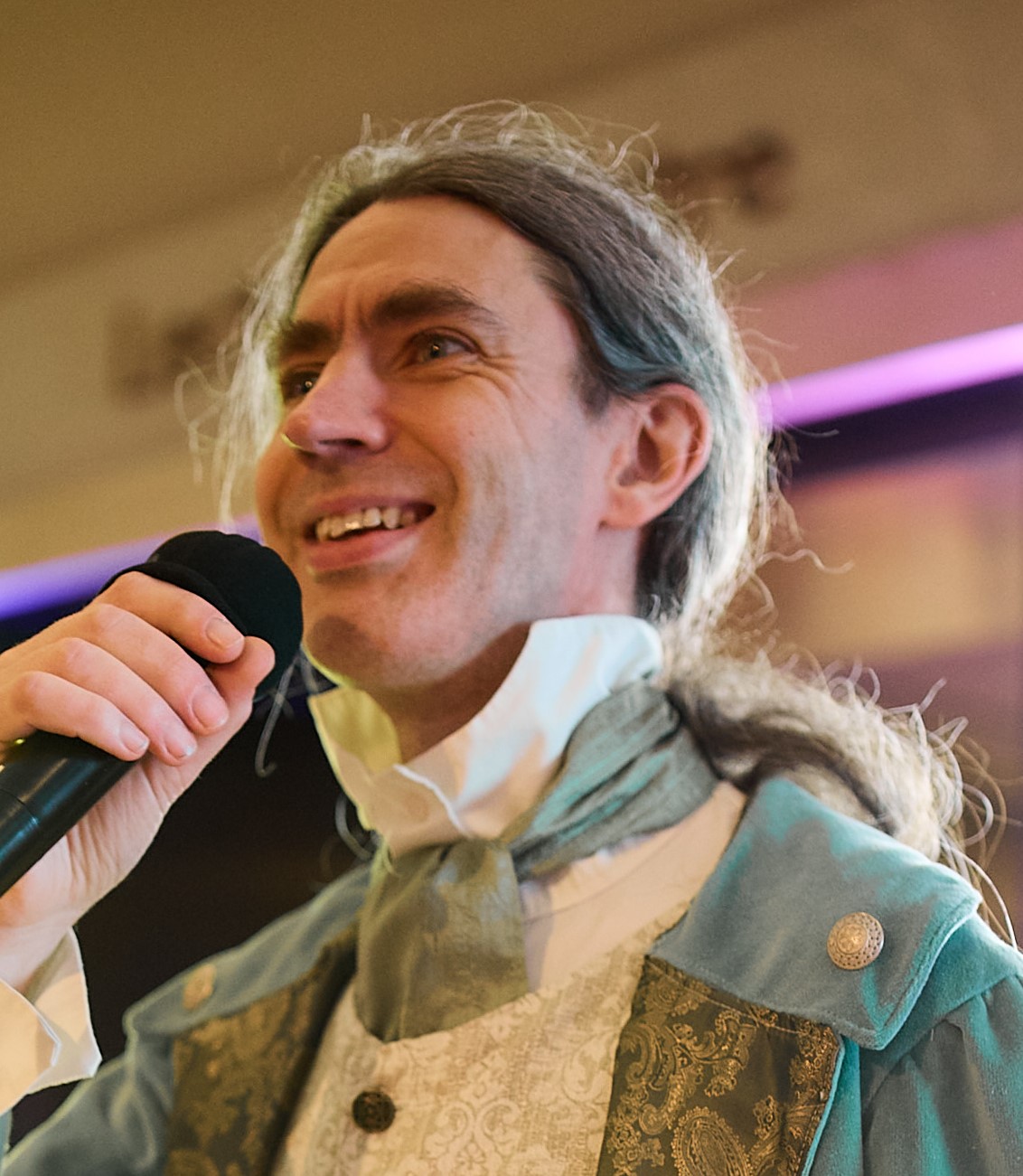
I've been dancing since I was quite small. In that time I've tried lots of different styles, and loved every minute of it. I've been calling and teaching workshops, mostly of various forms of country dancing, since I started university in 1996, and aim to pass some of that enjoyment on.
The caller is the person who teaches the dances and "calls" the moves once the dance has started until I think everyone can do it on their own. The skill of the caller is not just in giving clear instructions, but also in creating a relaxed, enjoyable atmosphere and choosing an appropriate selection of dances that will maximise the enjoyment of the dancers and show off the best aspects of the band.
I call for all levels of dance, which means that whatever may happen I can adjust the programme of the evening to suit, ensuring that everyone has an enjoyable evening. Because I like variety, I work with lots of different bands rather than staying with any one band; I am lucky enough to have worked with well over 100 bands over the years.
My calling generally divides into the following categories:
English Ceilidh / Barn Dancing
This is where I started calling. It's lively, accessible and unencumbered, a living tradition of community dancing for fun that is still popular at weddings and other social gatherings.
All such events are suitable for beginners, however the proportion of beginners in any evening varies wildly, from evenings where there is not a single person in the room who has done it before (common at weddings) through to festivals and monthly series where the vast majority of the participants dance on a regular basis. If you are a beginner at the latter type of event, you are in for one heck of an experience, since the best bands and dancing are to be found here – the learning curve is obviously steeper, but the other people there can help you out. Don't feel that you are intruding into their enjoyment (fortunately most people will recognise that new blood is essential to the success of the dance) – just mix around the floor, and remember that enjoyment is more important than accuracy (meaning you can mess about with the dances as much as you like so long as you don't stop others enjoying themselves in the process).
American Contra Dancing
Contra dancing is what American dance addicts do instead of English ceilidh. It can be high-energy, intense and mesmeric, but is also accessible to people with lower levels of energy to give. Whereas the energy in English ceilidh is largely vertical, in Contra the energy is completely horizontal, as you fly from person to person around the set, never letting momentum going to waste, and there's a higher emphasis on great choreography. It's become increasingly popular in England over the last 20 years or so, especially amongst English Ceilidh dancers looking for a bit more of a challenge.
Playford and English Social Dancing
John Playford was a publisher in the mid-17th century who published a lot of "country dances" which were being danced in the English Inns of Court at the time. It's commonly believed that that they were initially dances for light relief based on what the common folk were doing, but dancing masters got involved and many of the dances are quite elaborate! They evolved considerably when Charles II came back from exile and country dancing became very popular throughout the nation and much of Western Europe, declining in the early 19th century. At the beginning of the 20th century Cecil Sharp, reviving interest in all things traditionally English, reinterpreted and and taught these dances. Since then new dances have been written in comparable styles and a separate "English Social Dancing" strand of country dancing has developed.
The Round, the university group where I learned to call, was started as a Playford group, it's something I'm very attached to and have done quite a lot of research on. I promote a relatively lively and accessible style – my goal is to rediscover what made these dances fun in the first place.
French Couple Dancing / Balfolk
(Almost) nothing to do with country dancing...
As a kid I was constantly amazed by foreign folk dance forms – I was lucky enough to partake with my family and folk dance group in many foreign folk dance exchange trips. I remember the French dances the most (although I think it was mostly to do with the music of the incomparable hurdy-gurdy!) As an adult, I was quickly taken by the French couple dances – a variety of dances done primarily just with your partner, in contrast to the other dances described on this page. The music that goes with these dances is stunning.
There are a handful of basic dances, which dancers going to an evening of French dance are expected to know – after that, you can make up your own variations or copy those whose dancing you like. The tradition has spread further afield, incorporating dances from a number of European countries (pretty much only the bourrée is actually French in origin), and is often referred to these days as "Balfolk", after the word "bal" used for a dance event.